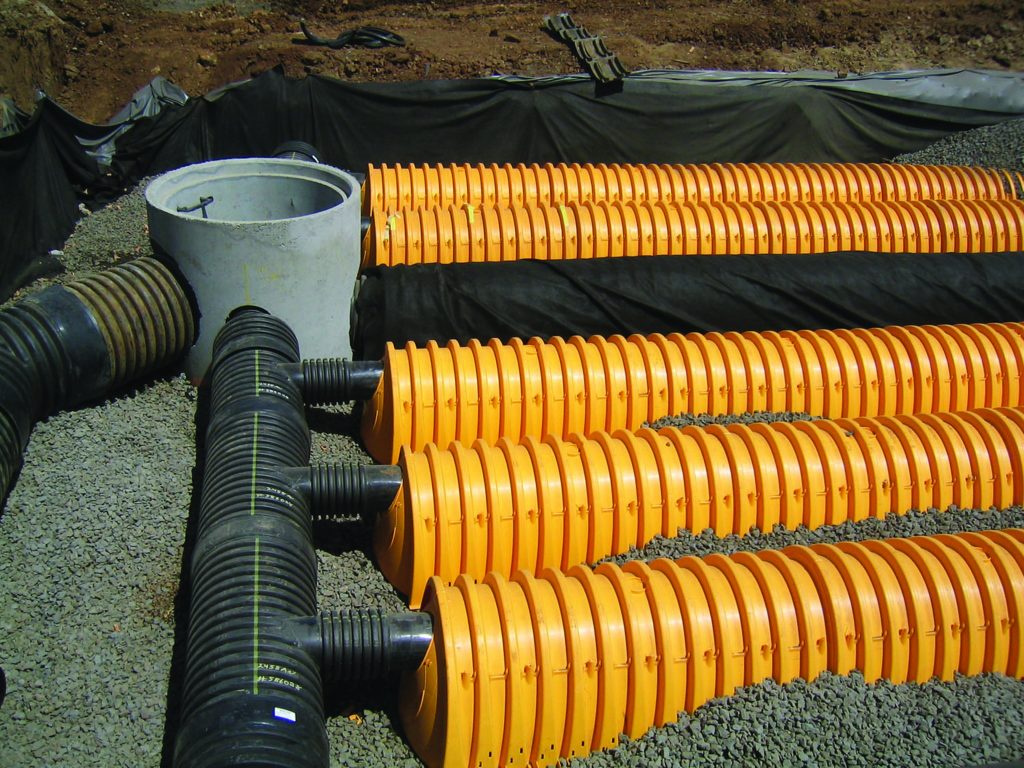With legislation mandating SuDS and their adoption for new developments on the horizon, developers and designers need to upskill to ensure future designs meet tough new standards.
The Government’s recent announcement that it intends to implement Schedule 3 of the Flood and Water Management Act 2010, is a game changer for SuDS. It means that SuDS adoption is expected to be mandatory in England, as it has been in Wales since 2019. In Scotland, Schedule 3 has not been implemented, but SuDS is generally a requirement within planning legislation.
“While developers currently have the right to connect drainage systems into sewers, that is unlikely to be the case anymore,” explains Stuart Crisp, UK manager at Advanced Drainage Systems (ADS). “Instead, they will have to show that they have included SuDS in their schemes and demonstrate how that SuDS system can be maintained over the lifetime of a development.”
Subject to a consultation later this year, implementation of Schedule 3, which includes SuDS approval and adoption, is expected in late 2024. That means that there is less than two years for concerned professionals to get up to speed with the range and implications of possible solutions, both above and below ground.
“Designers will have to think about more than just hydraulic design, to include whole life maintenance and treatment train to deal with water quality issues and specific pollutants,” says Crisp. “There will probably be a transition period as Schedule 3 comes in, but it makes sense to upskill now in order to future-proof designs.”

Currently, SuDS can be adopted by water companies as long as systems comply with the Design and Construction Guidance (DCG) which sets out how SuDS should be delivered. However, it is not compulsory for a developer to jump through the adoption hoops, leading to some assets not being of a prescribed, consistent standard of quality and performance or properly maintained and monitored, leading to problems down the line.
DCG was updated last year to include arch-shaped below-ground attenuation structures, such as ADS’s StormTech. StormTech offers a flexible and cost-efficient alternative to other below-ground attenuation structures such as crates or large-diameter pipes, with the benefit of built-in pollution treatment, reducing the extent of additional treatment elsewhere in the SuDS system.
It is expected that Schedule 3 will change the adopters of SuDS to become SuDS approving bodies (SABs) which will be within unitary councils or county councils. And it will bring in new statutory guidance, taking over from DCG to cover design, construction and operation over an asset’s lifetime.
“The statutory requirements in England are likely to be more onerous than both DCG and the current non-statutory standards in terms of what will be acceptable for planning approval and adoption after construction,” warns Crisp. “SuDS adoption becoming mandatory, with few exceptions, will raise the bar. Happily, poor quality products and poorly executed designs are likely to disappear from the market.”
For anyone looking to start the upskilling process now, manufacturer training and CPDs, such as those on below-ground attenuation offered by ADS, are already available and should include information on legislation, best practice and comparable systems.
For more information on Advanced Drainage Systems, visit www.adspipe.co.uk.